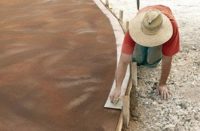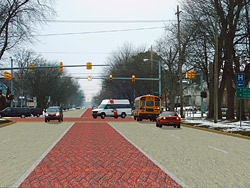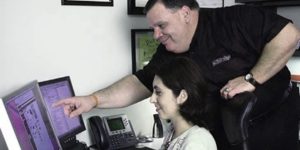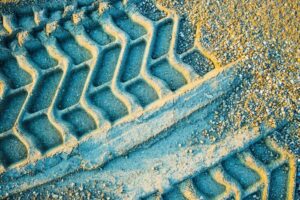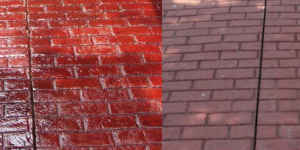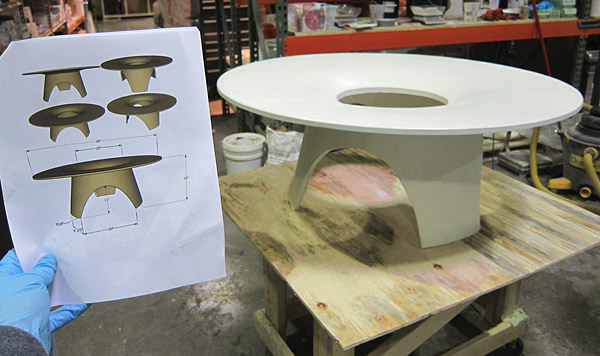
Whether you are a paleo-pencil-pusher or digital native, in today’s market you have to ask, what are the best digital tools for my business? The good news is, there is no single right answer for everyone. With hundreds of tools to choose from, you can find the best combination to fit your skills and interests.
Your digital portfolio
One digital tool you’re already familiar with is that marketing essential, the digital photo. “I like physical samples because I like to touch it, feel it, taste it before I buy it, but it’s physically impossible to have samples of everything,” says Tony Angell, North Metro Concrete Countertops LLC, in Marine on St. Croix, Minn. Like many contractors, he uses digital photos and a website to showcase his work.
The proliferation of camera phones potentially dilutes the power of this tool by encouraging a flood of low-resolution, badly executed snaps that fall short of capturing the true beauty of a project. The first step in creating a digital portfolio is learning how to take pictures properly, according to Jeffrey Girard, P.E., president of The Concrete Countertop Institute. He recommends using a real camera, not a phone, and actually looking at what you’re taking a picture of to make sure everything ugly (rags, tools, trash) is out of the frame.
After downloading the photo, use an editing tool such as Adobe Photoshop or iPhoto to crop the picture and adjust the contrast and brightness, making the project look its best. “Photo editing tools are popular and important pieces of software,” says Girard. “The whole point is to communicate to customers the possibilities of what you can do.”
While there are many cheap do-it-yourself options available for creating your company’s website, decorative contractors may find it makes sense to pay others to do that work so they can concentrate on what they do best. “We recently purchased a website theme that has worked very well for marketing Lancaster Concrete Designs,” says Thomas Lancaster, of Alpine, Texas.
What’s more, potential customers are no longer limited to clicking through a website portfolio to view digital images. “The iPad has changed how we communicate with pictures dramatically. We have folders that tell stories,” says Mac user Cory Hanneman, Element 7 Concrete Flooring, Marble Falls, Texas.
Project planning
Digital technology has changed the planning process, from proposal to project design to the mix itself. For example, Todd Scharich, owner of Decorative Concrete Resources, a distributor in Saginaw, Mich., touts rendering software. “We have found great success using Depiction Software when working with architects, engineers and city planners on streetscape enhancement projects, where design committees don’t yet have a true vision of what they want to create.” Scharich has used this rendering software for the past 10 years to create artistic conceptions of a project that help customers choose colors and patterns.
One significant project completed using this software was replacing the main thoroughfare through the historic district of Bay City, Mich. Center Avenue was originally constructed of wood during Bay City’s lumber baron era, and later of brick. The local historical society wanted a return to the old look, but brick pavers were not appropriate for the street’s volume of traffic. Scharich, who is also the decorative concrete specialist for the American Society of Concrete Contractors, was invited to explain the advantages of decorative concrete to Michigan Department of Transportation engineers, city officials and the historical society. “I offered to create a rendering of possible looks for the new road and forwarded them on to the engineers,” Scharich explains. “Two years later the project quietly appeared on the MDOT job lettings, and it eventually became the biggest installation that my company ever supplied.”
Once the look of the finished project is agreed upon, there is software to help contractors actually design and specify it. One program Girard uses is SketchUp, for drawing in 3-D. “I can create the final concrete product and then build virtual forms around it to see how it will go together,” he says.
In some cases, decorative contractors will have to sync up with general contractors or architects. AutoSketch is a 2-D design program compatible with AutoCAD, which is widely used by architects.
Programs for calculating mix designs can be invaluable for saving time, preventing errors and delivering the best possible finished product. “We have software that calculates our mix design,” Lancaster says. “The batch for every job is measured to the 20th of a gram.” Angell feels he could not function without his GFRC mix design calculator. “I have it backed up on three or four computers plus a flash drive. If I ever lost that, I would be in trouble.” The Concrete Countertop Institute sells calculator programs for both GFRC and precast mixes.
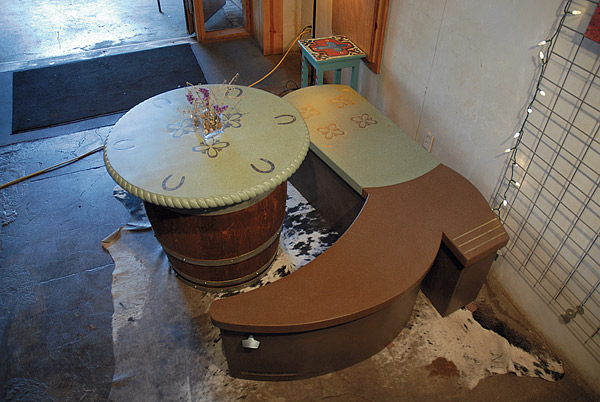
Project details
With an approved design in hand and the right mix calculated, there are still a lot of details the computer can help manage. Offering an extreme example, Cory Hanneman says his office “sits in a tiny backpack. With Dropbox for sharing documents and photos and iCloud I can access everything from anywhere.”
Element 7 Concrete specializes in high-end residential floors, a business Hanneman describes as very detailed with a high level of customer engagement. Every day his crew leaders take photos before and after work to email to the customer with an explanation of what was accomplished that day. “It’s just iPhones and emails,” he says, “but it is using them strategically to empower the guys out in the field.”
Hanneman says his workers’ iPhones are also useful for time management. Each employee has a card on the wall with his or her personal QR code on it. When he comes to work he scans it with his phone, using an iPhone app called TimeStation. When he leaves he scans it again.
To concentrate on what he and his staff do best while improving estimating and budgeting, Hanneman outsources some of the tedious, repetitive work to a personal assistant in the Philippines he found through oDesk.com. She populates a spreadsheet with field report data, including square footage, number of steps, crew size, time spent and so on. Comparing estimates with actuals helps Hanneman improve the accuracy of his estimates.
He’s since expanded this capability to address other cost-control opportunities. For example, he now includes before-and-after measurements of diamond polishing tools and how long they were in use on a given job. With this data, the offshore personal assistant calculates the actual costs, which the company uses to determine if new types of diamond tooling are more productive. “There are a lot of things that would be awesome to do if you had the time,” Hanneman says. “In other parts of the world, it’s affordable.” He cautions that outsourcing overseas works best for jobs that are highly repetitive and repeatable.
Working on a different scale, Denver-based Colorado Hardscapes uses Sage 300 Trade Specialty, formerly Sage Timberline Enterprise, for project management, estimating, inventory and accounting for its commercial and residential business. Karen Van Heukelem, LEED AP BD+C, says her company has more than 12 years of success with this technology. She predicts a move to more cloud-based information storage and sharing, and she says her company is “looking into those options as they apply to our business.”
The business end
Finally, perhaps the most time-tested and widely used software programs are those used for managing business functions. Van Heukelem likes Google for email because of its ease of use, storage capacity and searchability, and because it eliminates the need for a local mail server. Quicken and QuickBooks, both from Intuit, are popular tools for tracking finances.
Lane Mangum, vice president, business services for The Concrete Countertop Institute, also stresses the importance of a contact management system (CMS), sometimes called a customer relationship management (CRM) program. In her book “Marketing & Selling Concrete Countertops,” she writes, “A CMS allows you to store people’s contact information, record each phone call and email as an event, and track characteristics about the person or project. The most important (selection) criteria for a concrete countertop business are low cost, ease of setup, ease of use and the ability to access the system using a mobile device.” One example of this type of program, with both free and low-cost versions, is CampaignerCRM.
